#canyon de chelly national monument
Explore tagged Tumblr posts
Text

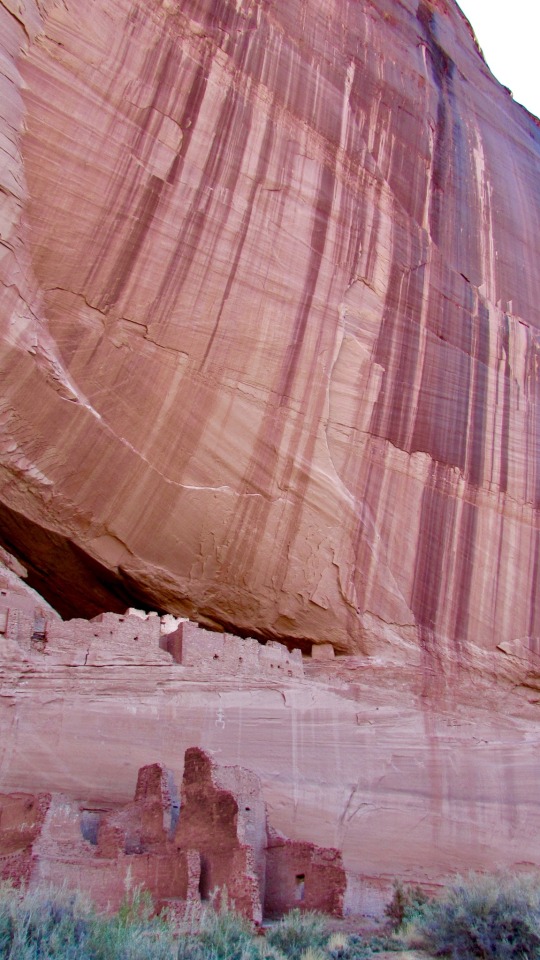
#canyon de chelly national monument#canyon de chelly#anasazi#ancestral puebloan#archaeology#history#ruins#adventure#travel#my photo#southwest#desert#arizona#scenery#photography#aesthetic
360 notes
·
View notes
Text
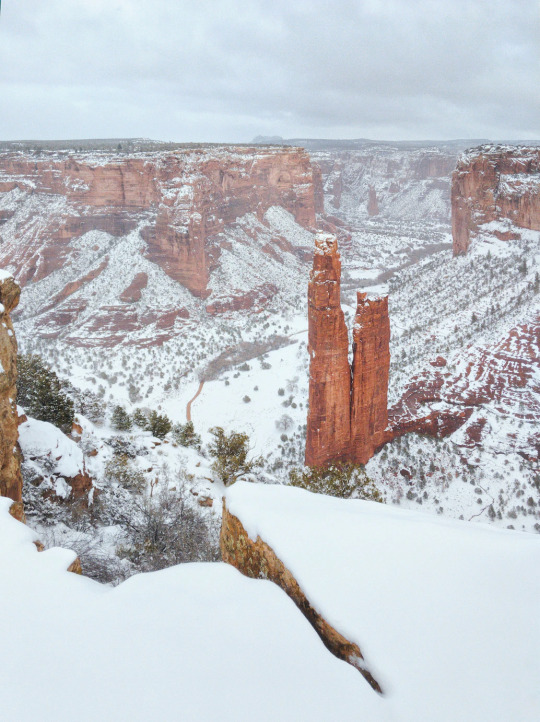
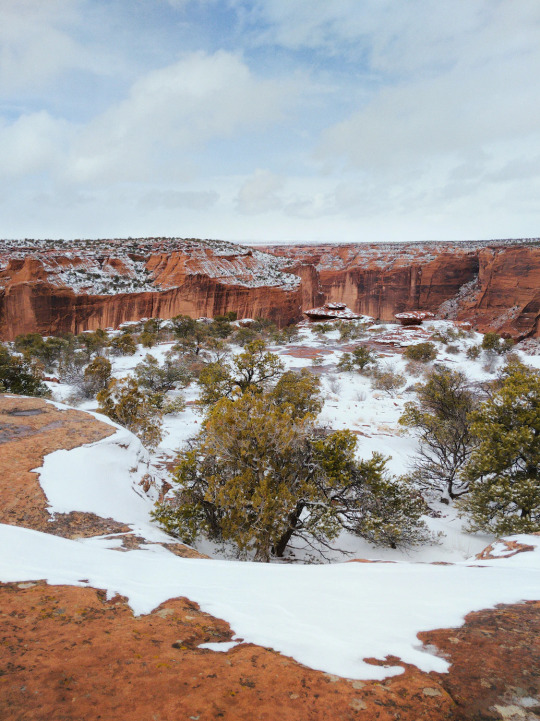
Canyon de Chelly National Monument, Apache County, Arizona, USA
Landon Parenteau
#Canyon de Chelly National Monument#Apache County#Arizona#USA#National Monument#AZNature#US#United States#United States of America#North America#Winter#Canyon de Chelly
3 notes
·
View notes
Text
Hiking Canyon de Chelly, AZ
#the dumbest shit in the weirdest places#traveling#travel#road trip#driving#photo#photography#caving#caves#national monument#canyon de chelly#arizona#puebloan ruins
3 notes
·
View notes
Text

Canyon de Chelly National Monument in Arizona
3K notes
·
View notes
Text
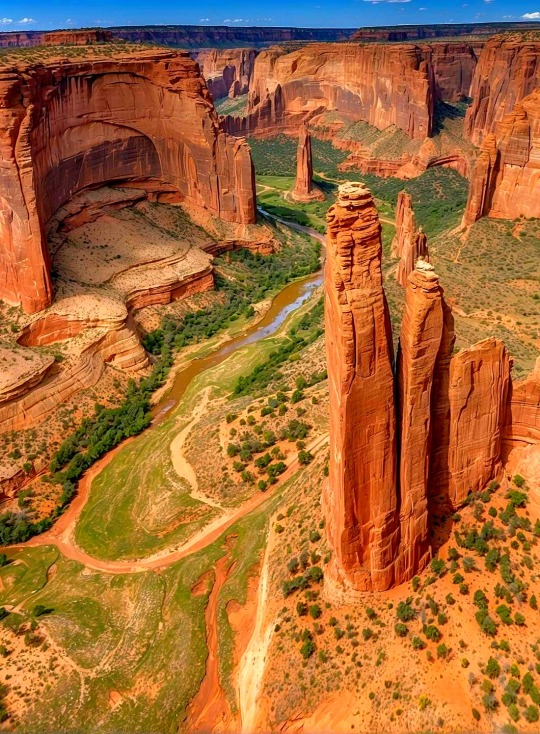
Canyon de Chelly National Monument, Arizona, USA
2K notes
·
View notes
Text

Canyon de Chelly National Monument - Arizona
394 notes
·
View notes
Text

Canyon de Chelly National Monument in Arizona
150 notes
·
View notes
Text

Feel the Nature
Canyon de Chelly National Monument in Arizona
338 notes
·
View notes
Note
Hi 👋As a Park Ranger (interpretative, like me?), I assume you know all about how the NPS was formed- most of the land was brutally, illegally taken from the local tribes. I've been having a moral dilemma about my role in the national park system. I love educating the public and being a positive influence, but am I upholding an oppressive system? I know that if I were to switch to education or to museums, it'd be the same question. What I'm asking is: how do you reconcile with that?
I mean, this is true of all the land in the US, so it's bigger than the park service.
Before I dig into this as a white person, here's what Deb Haaland has to say:
I think that the Park Service has a lot to reckon with historically, and I think parks lately are showing some interest in trying to do that. From big parks like Yellowstone bringing diverse Indigenous stakeholders to to table on management decisions while also supplying buffalo to regrow and strengthen herds thousands of miles away, to Canyon de Chelly's requirement that tourists travel into the canyon only with a Navajo guide in recognition of the location's sacred nature, to Pipestone National Monument celebrating ongoing traditional pipestone quarrying, to advocacy for protection by the Department of the Interior at Bears Ears.
As a (pretty much entirely) white interp ranger, I understand that I'm living in someone else's home, but I was living in someone else's home when I lived in LA too, and none of that is unique to the US. And honestly I think, for the tremendous flaws of the National Park idea, at least we try to preserve things. In a lot of colonial nations that hasn't been the case.
I think more National Park Sites should form better relationships with local tribal governments, and see what they want. Different people have different relationships with different places, and will want different things. I think the Park Service should open the door to co management more, and encourage more opportunities for Indigenous people to tell their own stories and not leave it all in the hands of randos like us. I think we're moving the right direction in that regard.
The fact of the matter, in the end, is that none of this begins or ends with the Park Service. It's a puzzle piece, a tool used to enact, enforce, repair, undo, and uphold the ideals of a nation that has never effectively dealt with its past, present, or future. I think protecting land from development and preserving natural spaces is a valuable, albeit naive, goal. It can't be done in a vacuum though. As I look toward a future of the National Parks, I see a lot more Native involvement in their management. That will look different in each site, in reflection of the different cultures there. I can't speak to what that will look like for anywhere in particular, but it is happening already, and as educators it's part of our job to explain the whys and hows of that to people who don't get it, and who think sharing will mean losing something they love. At the end of the day, that thing they loved was broken, and there is good momentum behind fixing it, and most people can understand that given time.
I think it's good that you feel guilty. It means you're paying attention. I think the important thing now is to turn that into momentum and passion. Figure out what you can do and do it.
66 notes
·
View notes
Text

Canyon de Chelly National Monument, Arizona, Photo by Ansel Adams, 1942
108 notes
·
View notes
Photo
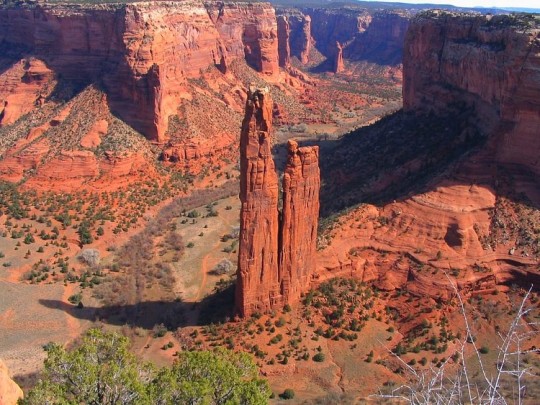
Canyon de Chelly
Canyon de Chelly or Canyon de Chelly National Monument is a protected site that contains the remains of 5,000 years of Native American inhabitation. Canyon de Chelly is located in the northeastern portion of the US state of Arizona within the Navajo Nation and not too far from the border with neighboring New Mexico. It is located 472 km (293 miles) northwest of Phoenix, Arizona. Canyon de Chelly is unique in the United States as it preserves the ruins and rock art of indigenous peoples that lived in the region for centuries - the Ancestral Puebloans and the Navajo. Canyon de Chelly has been recognized as a US National Monument since 1931 CE, and it is one of the most visited National Monuments in the United States today.
Geography & Prehistory
The etymology of Canyon de Chelly's name is unusual in the U.S. Southwest as it initially appears to resemble French rather than the more ubiquitous Spanish. "Chelly" is actually derived from the Navajo word tseg, which means "rock canyon" or "in a canyon." Spanish explorers and government officials began to utilize a "Chelly,” “Chegui,” and even "Chelle" in order to try to replicate the Navajo word in the early 1800s CE, which eventually was standardized to “de Chelly” by the middle of the 19th century CE.
Canyon de Chelly lies very close to Chinle, Arizona, and it is located between the Ancestral Puebloan ruins of Betakin and Kiet Siel in the west and the grand structures of Chaco Canyon in New Mexico in the east. Canyon de Chelly, as a National Monument, covers 83,840 acres (339.3 km2; 131.0 sq miles) of land that is currently owned by the Navajo tribe. Spectacularly situated on the Colorado Plateau near the Four Corner's Region, Canyon de Chelly sits at an elevation of over 1829 m (6,000 ft) and bisects the Defiance Plateau in eastern Arizona. The tributaries of the Chinle Creek, which runs through Canyon de Chelly and originates in the Chuska Mountains, have carved the rock and landscape for thousands of years, creating red cliffs that rise up an additional 305 m (1000 ft). The National Monument extends into the canyons of de Chelly, del Muerto, and Monument.
Canyon de Chelly is one of the longest continuously inhabited places anywhere in North America, and archaeologists believe that human settlement in the canyon dates back some 5,000 years. Ancient prehistoric tribes and peoples utilized the canyon while hunting and migrating seasonally, but they did not construct permanent settlements within the canyon. Nonetheless, these prehistoric peoples did leave etchings on stones and on canyon walls throughout what is now Canyon de Chelly. Around c. 200-100 BCE, peoples following a semi-agricultural and sedentary way of life began to inhabit the canyon. (Archaeologists refer to these peoples as "Basketmakers." They are considered the ancestors to the Ancestral Puebloan Peoples.) While they still hunted and gathered like their prehistoric forebears, they also farmed the land where fertile, growing corn, beans, squash, and other small crops. It is also known that they grew cotton for textile production. Yucca and grama grass have grown in the canyon for several millennia, and indigenous people utilized these plants when making baskets, sandals, and various types of mats. Prickly pear cactus (Opuntia cactaceae) and pinyon are also found throughout Canyon de Chelly, the latter of which provided an important source of food for indigenous peoples in autumn and winter. Fish are found in Canyon de Chelly's tributaries, and large and small game frequent the canyon.
Continue reading...
52 notes
·
View notes
Text

"The Window" - Canyon de Chelly National Monument - Apache County - Arizona
15 notes
·
View notes
Text
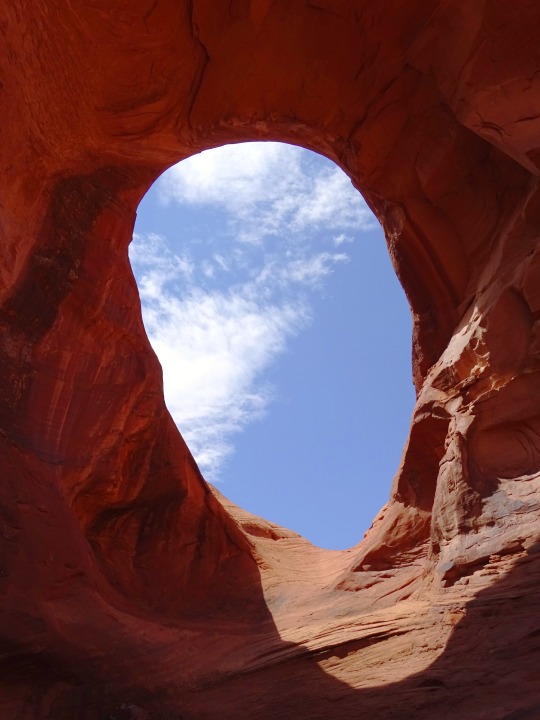
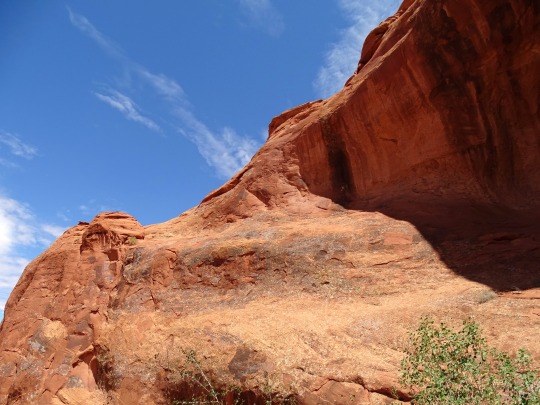
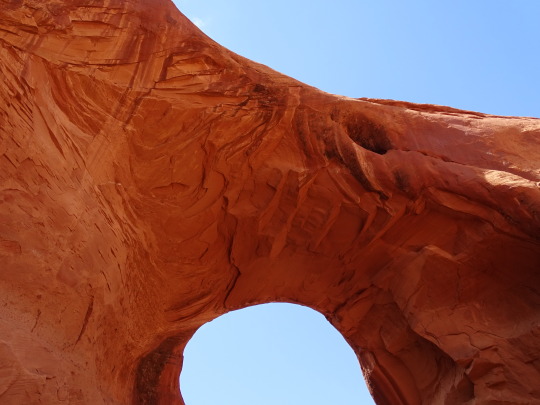
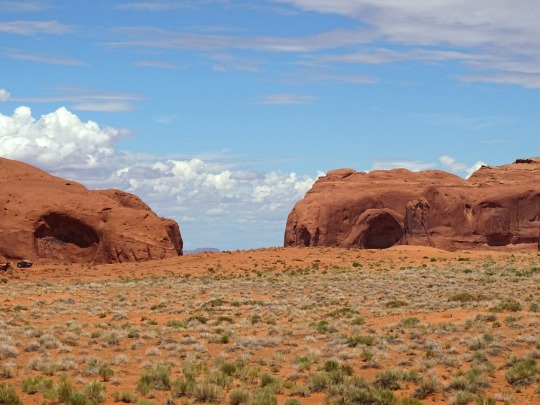
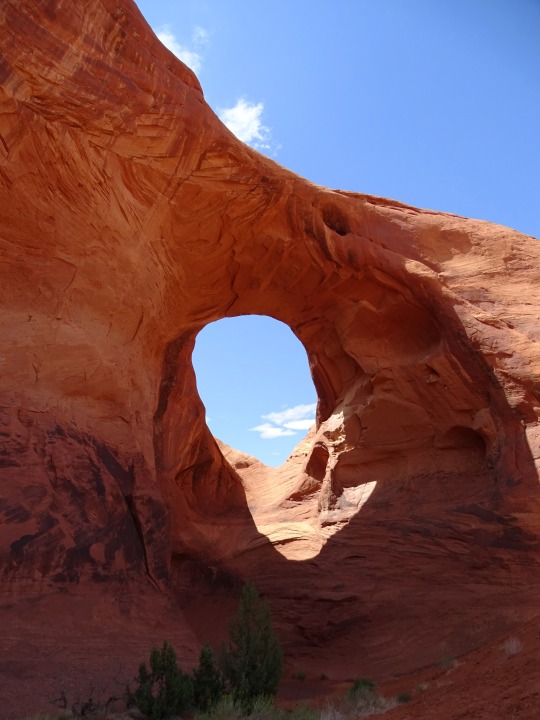
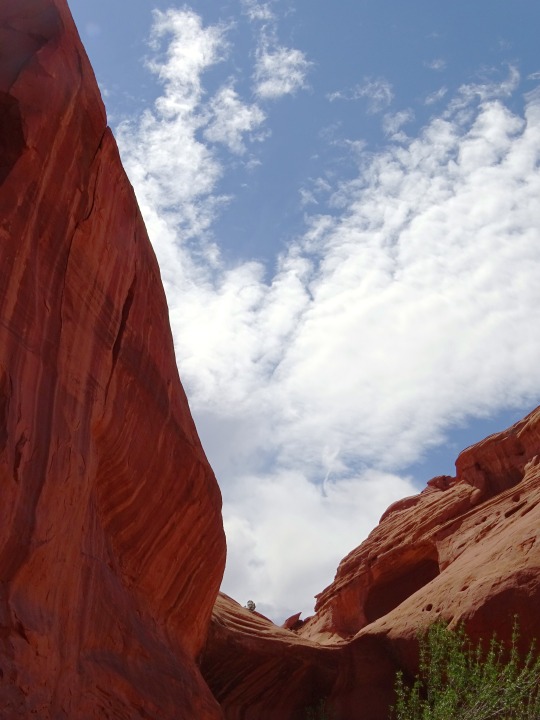
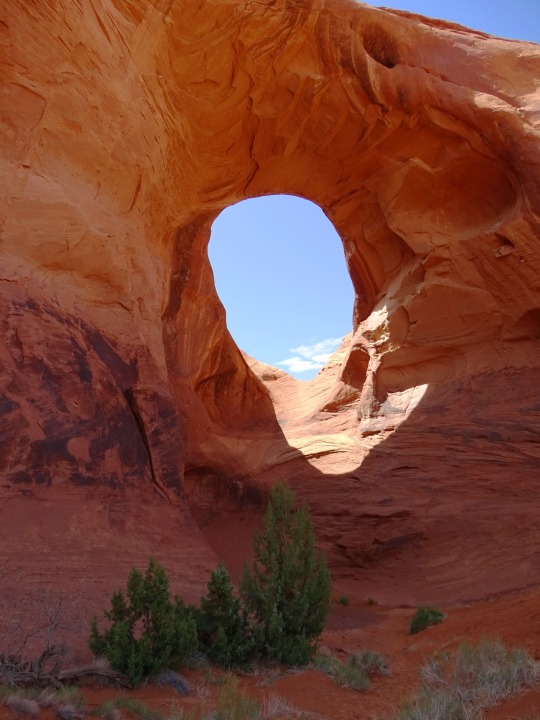
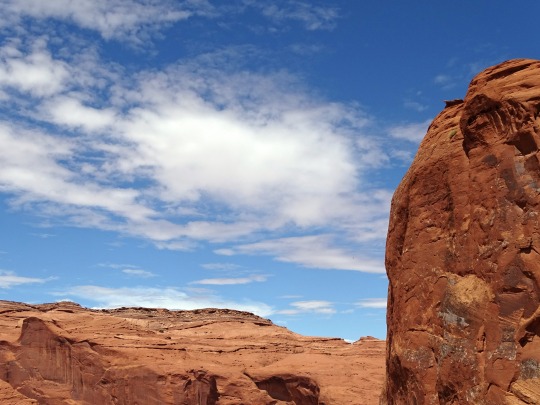
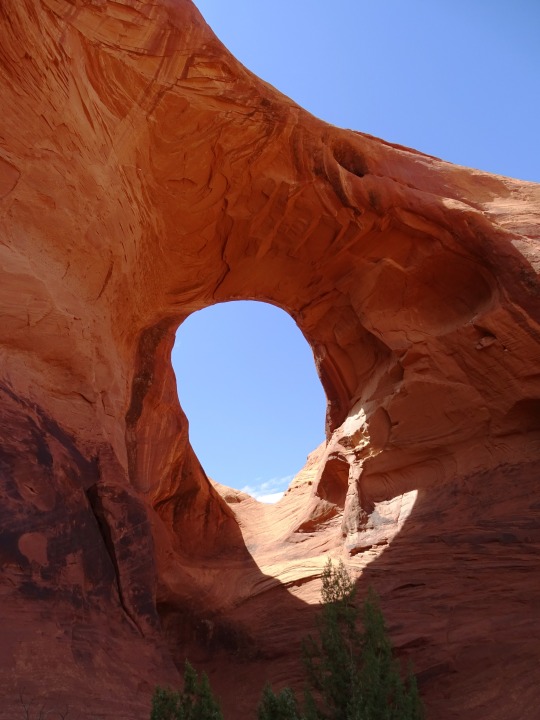

Monument Valley, AZ (No. 13)
Situated on the Navajo Nation are Canyon de Chelly National Monument, Monument Valley, Rainbow Bridge National Monument, the Shiprock monadnock, and the eastern portion of the Grand Canyon. Navajo Territory in New Mexico is popularly referred as the "Checkerboard" area because it is interrupted by Navajo and non-Native fee ownership of numerous plots of land. In this area, Navajo lands are intermingled with fee lands, owned by both Navajo and non-Navajo, and federal and state lands under various jurisdictions. Three large non-contiguous sections located in New Mexico are also under Navajo jurisdiction: these are the Ramah Navajo Indian Reservation, the Alamo Navajo Indian Reservation, and the Tohajiilee Indian Reservation near Albuquerque.
Source: Wikipedia
#Navajo County#Navajo Nation#Southwestern USA#Colorado Plateau#Monument Valley#Monument Valley Navajo Tribal Park#desert#flora#nature#blue sky#clouds#grass#travel#original photography#vacation#tourist attraction#landmark#landscape#countryside#USA#Arizona#summer 2022#Ear of the Wind#I really love the first pic
57 notes
·
View notes
Text
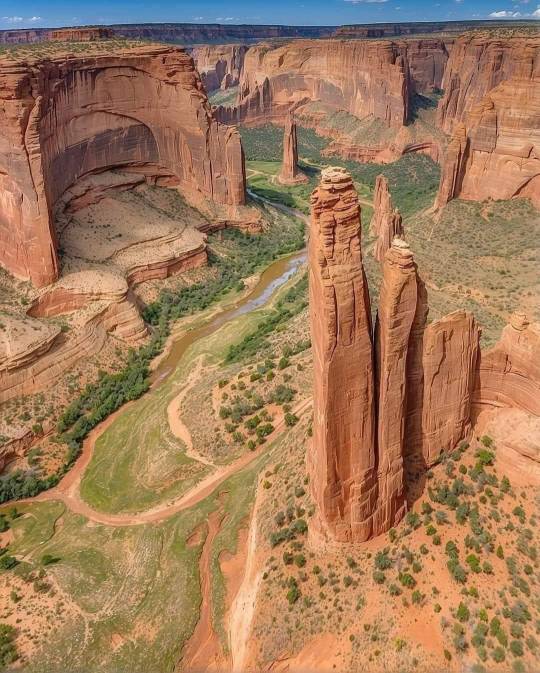
Canyon de Chelly National Monument in Arizona
1K notes
·
View notes
Text

Canyon de Chelly Sunset a wonderful autumn day at Canyon de Chelly National Monument in eastern Arizona, USA
349 notes
·
View notes
Text
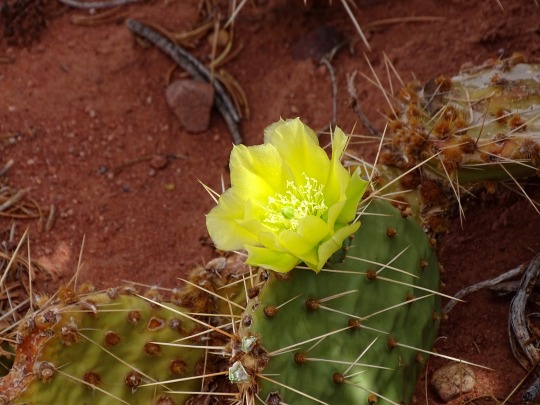
Cacti have the best flowers. Canyon de Chelly National Monument, Arizona.
Explore Canyon de Chelly:
#cactus#cactus flower#flower#spring flower#travel#nature#original photography#landscape#nature photography#explore#canyon de chelly#arizona#national park service#national park#photography#photographers on tumblr#wanderingjana
30 notes
·
View notes